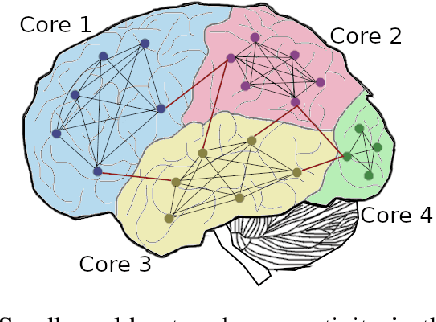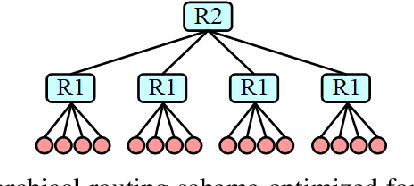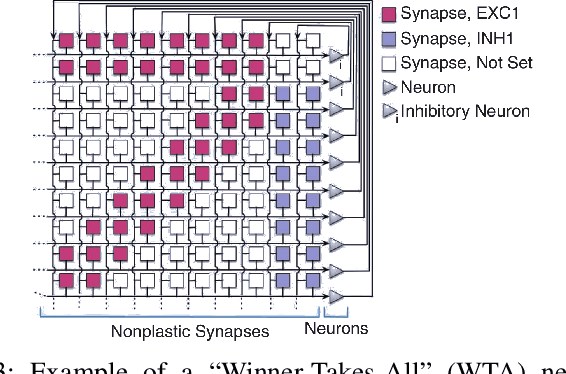Adrian M. Whatley
DYNAP-SE2: a scalable multi-core dynamic neuromorphic asynchronous spiking neural network processor
Oct 01, 2023Abstract:With the remarkable progress that technology has made, the need for processing data near the sensors at the edge has increased dramatically. The electronic systems used in these applications must process data continuously, in real-time, and extract relevant information using the smallest possible energy budgets. A promising approach for implementing always-on processing of sensory signals that supports on-demand, sparse, and edge-computing is to take inspiration from biological nervous system. Following this approach, we present a brain-inspired platform for prototyping real-time event-based Spiking Neural Networks (SNNs). The system proposed supports the direct emulation of dynamic and realistic neural processing phenomena such as short-term plasticity, NMDA gating, AMPA diffusion, homeostasis, spike frequency adaptation, conductance-based dendritic compartments and spike transmission delays. The analog circuits that implement such primitives are paired with a low latency asynchronous digital circuits for routing and mapping events. This asynchronous infrastructure enables the definition of different network architectures, and provides direct event-based interfaces to convert and encode data from event-based and continuous-signal sensors. Here we describe the overall system architecture, we characterize the mixed signal analog-digital circuits that emulate neural dynamics, demonstrate their features with experimental measurements, and present a low- and high-level software ecosystem that can be used for configuring the system. The flexibility to emulate different biologically plausible neural networks, and the chip's ability to monitor both population and single neuron signals in real-time, allow to develop and validate complex models of neural processing for both basic research and edge-computing applications.
Cortical-inspired placement and routing: minimizing the memory resources in multi-core neuromorphic processors
Aug 29, 2022



Abstract:Brain-inspired event-based neuromorphic processing systems have emerged as a promising technology in particular for bio-medical circuits and systems. However, both neuromorphic and biological implementations of neural networks have critical energy and memory constraints. To minimize the use of memory resources in multi-core neuromorphic processors, we propose a network design approach inspired by biological neural networks. We use this approach to design a new routing scheme optimized for small-world networks and, at the same time, to present a hardware-aware placement algorithm that optimizes the allocation of resources for small-world network models. We validate the algorithm with a canonical small-world network and present preliminary results for other networks derived from it
A hardware-software co-design approach to minimize the use of memory resources in multi-core neuromorphic processors
Mar 01, 2022



Abstract:Both in electronics and biology, physical implementations of neural networks have severe energy and memory constraints. We propose a hardware-software co-design approach for minimizing the use of memory resources in multi-core neuromorphic processors, by taking inspiration from biological neural networks. We use this approach to design new routing schemes optimized for small-world networks and to provide guidelines for designing novel application-specific multi-core neuromorphic chips. Starting from the hierarchical routing scheme proposed, we present a hardware-aware placement algorithm that optimizes the allocation of resources for arbitrary network models. We validate the algorithm with a canonical small-world network and present preliminary results for other networks derived from it.
 Add to Chrome
Add to Chrome Add to Firefox
Add to Firefox Add to Edge
Add to Edge